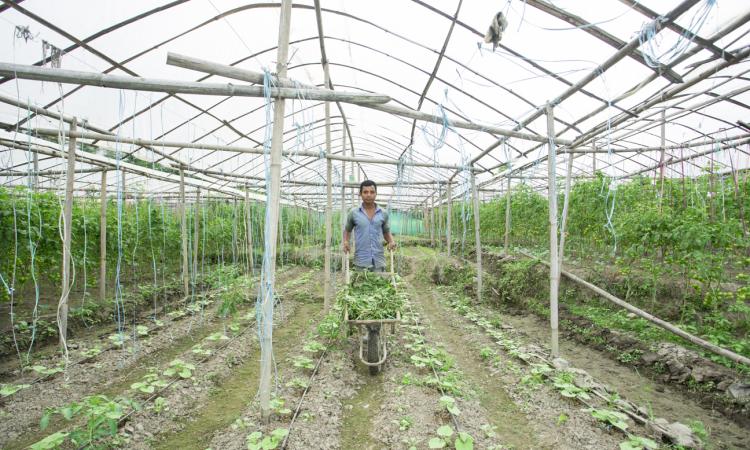
How do you save water? By using less of it? It sounds simple, but defining water use is more complex. Is it the amount of water drawn from the ground or piped supply for crop irrigation? Or is it the water consumed by the crops themselves to grow? And is water truly wasted if it returns to the ground or evaporates into the atmosphere, eventually being reused elsewhere?
If this reframing of a seemingly obvious concept confuses you, you're not alone. Many of us fundamentally misunderstand water accounting. The prevailing narrative is simple: using more water is bad, and using less is good. We often perceive flood irrigation, where farmers inundate fields with water, as wasteful, whereas techniques like drip irrigation, which supplies just enough water for crops to grow, are seen as conserving water.
However, in India, where farmers face erratic electricity supplies but benefit from subsidised rates, drip irrigation can paradoxically lead to more water depletion. Farmers tend to leave pumps on to operate whenever power is available, leading crops to consume more water and grow faster. By contrast, flood irrigation, though less efficient in yield, often results in greater water run-off, replenishing the hydrological system and enabling downstream use.
What is economically beneficial for farmers may not align with water conservation goals. This is a distinction not often recognised in public discourse or media coverage on water conservation. Understanding this complexity is crucial for startups and organisations tackling India's water challenges. They must develop business models and reporting systems that reflect these nuances. Otherwise, their solutions could exacerbate rather than alleviate water-related issues. For example, promoting drip irrigation as a water-saving technology might not be accurate at a watershed level, although it might save water on a field scale.
To address this, The/Nudge Institute's Prize Program organised a masterclass on water accounting for participants in the DCM Shriram AgWater Challenge. This startup contest, with a cash purse of 2.6 crore, seeks tech solutions for saving water in agriculture that are efficient, scalable, affordable, and profitable for small farmers.
The session, led by Ankit Chandra (Research Program Manager) and Nicholas Brozović (Director of Policy) from the Daugherty Water for Food Global Institute at the University of Nebraska, aimed to educate startups about the distinction between applied and consumptive water use, and the importance of calculating water consumption. They presented the counter-intuitive idea that an increase in crop yields from new irrigation technologies or management techniques often means higher water consumption by the crops, despite a reduction in applied water.
The masterclass used a real-life case study of a company offering conservation contracts akin to carbon credits but in a 'futures' trading format. This company claimed to save 12 billion litres of water by promoting drip irrigation. However, the instructors demonstrated that this approach actually increased water consumption, contrary to the company's claims.
Such misleading narratives are common in water conservation initiatives, often failing to distinguish between reductions in applied water versus consumptive use. While these technologies and business models might be economically advantageous for farmers in the short term, they can have significant implications for water availability at the watershed level.
This challenge is acute in India, where 86% of the agricultural sector consists of small-holder farmers. Unlike in western countries, where large farms can reuse return flow water, in India, it makes economic sense for each farmer to minimise return flow, as it would otherwise benefit others. Subsidised electricity eliminates concerns over input costs, shifting focus to the upfront investment in irrigation technology. However, technological advances that improve affordability and access must be deployed thoughtfully to avoid damaging the water ecosystem.
Calculating consumptive water use is complex, involving the sum of productive consumption by crops (transpiration), unproductive consumption by weeds, and categorising return flows as reusable and non-reusable. These calculations are further complicated in real-world scenarios with variables like rainfall and other forms of consumptive water use. In contrast, applied water can be more easily estimated with water metres and supply metrics, and such figures often garner more media attention.
The challenge for startups working in water conservation is to integrate the implications of consumptive use into their business models. The solution may not be purely technological; an understanding of the issue can drive more responsible approaches. For example, considering the trade-offs between water use efficiency for crops and regional water availability is crucial when determining the most suitable solutions.
Nick Brozović suggests alternative policies, such as cash rebates for farmers using less energy, to encourage the adoption of community-beneficial irrigation practices without adding financial burdens to the state or farmers.
Ankit Chandra hopes the workshop will enable startups to better calculate and communicate water impact measures, moving beyond simple water savings figures. He also suggests they consider expanding their business models to appeal to a broader range of stakeholders, including governments and NGOs, which have a more holistic view of watershed-level needs.
The workshop sparked enthusiastic engagement from contestants, with questions ranging from accounting for time and rainfall in consumptive use calculations to effectively communicating these complexities to investors.
In one sense, the masterclass raised more questions than it answered, but according to Kanishka Chatterjee, Head of The/Nudge Prize, that in itself is an important intervention as contestants in the DCM Shriram AgWater Challenge refine their solutions.
Ultimately, the challenge lies in balancing economic viability for farmers with the sustainable management of water resources. As the contestants of the DCM Shriram AgWater Challenge progress, their innovations could pave the way for a more water-conscious agricultural sector, not just in India but globally.
/articles/understanding-water-use-agriculture